| Columns Retired Columns & Blogs |
Krell KPS-20i CD player RH's Measurements
Sidebar 2: RH's Measurements
The KPS-20i had a maximum output level of 6.6V from the balanced outputs, and 3.3V from the unbalanced jacks. Output impedance was a very low 16 ohms (unbalanced) and 32 ohms (balanced) at any audio frequency. This combination of low output impedance and high output voltage means that the KPS-20i should have no trouble driving any preamplifier or even a power amplifier directly through a passive level control. The review sample had no trouble locking to 32kHz and 48kHz datastreams. The balanced outputs conform to the pin-2–hot standard, meaning that the KPS-20i won't invert absolute polarity when used with other pin-2–hot products. The Krell didn't invert absolute polarity from its single-ended outputs.
Fig.1 shows the KPS-20i's flat frequency response, with the de-emphasis error shown below. The de-emphasis circuit has half a dB of negative error at 20kHz, which will be audible as a slight reduction in air when playing pre-emphasized discs. Channel separation in balanced mode (fig.2) was excellent, measuring better than 110dB across the band, and 120dB up to 2kHz. (The unbalanced crosstalk was nearly identical.)
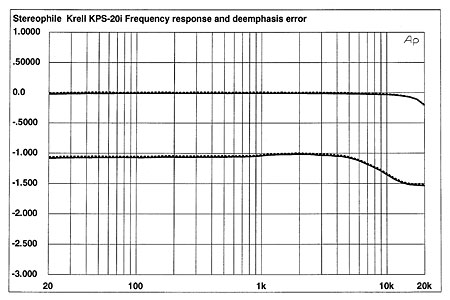
Fig.1 Krell KPS-20i, frequency response (bottom) and de-emphasis error (top) (right channel dashed, 0.5dB/vertical div.).
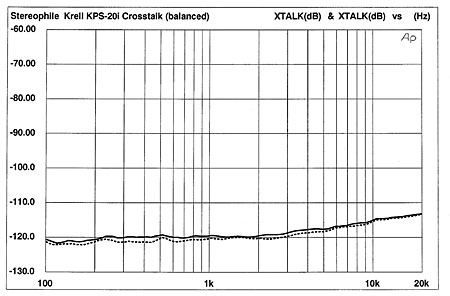
Fig.2 Krell KPS-20i, crosstalk R–L (L–R dashed, 10dB/vertical div.).
Playing data representing a 1kHz, –90dB dithered sinewave and plotting the spectrum of the Krell's output produced the plot of fig.3. The linearity looks good, the overall noise level is low, and there's a complete absence of power-supply noise in the audio circuits. This is superb performance.
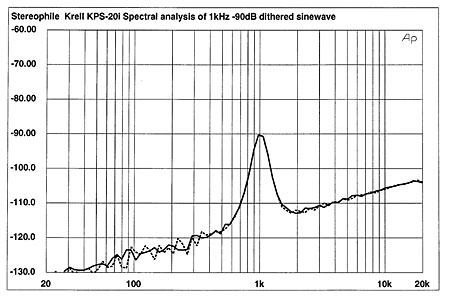
Fig.3 Krell KPS-20i, spectrum of dithered 1kHz tone at –90.31dBFS, with noise and spuriae (1/3-octave analysis, right channel dashed).
Fig.4, the KPS-20i's linearity plot, was highly unusual. The sharp changes in linearity at low levels are something I've never seen before. Usually, the plot follows the 0dB division to about –100dB, then slowly ramps upward as the processor's noise floor intrudes on the very-low-level test signal. The Krell's plot isn't poor—the linearity is virtually perfect to well below –100dB—but different. I suspect this odd performance has something to do with the MSB trimming of the PCM63 DAC. Perhaps in their Manufacturer's Comment Krell can explain what's going on.
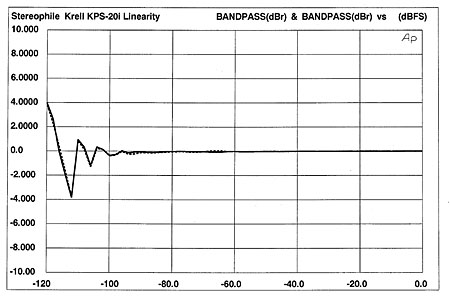
Fig.4 Krell KPS-20i, departure from linearity (right channel dashed, 2dB/vertical div.).
The KPS-20i's reproduction of a 1kHz, –90dB undithered sinewave (fig.5) was excellent. The quantization steps are uniform and symmetrical, and the noise level is low.
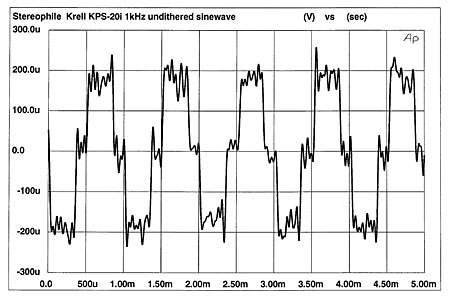
Fig.5 Krell KPS-20i, waveform of undithered 1kHz sinewave at –90.31dBFS.
Fig.6 shows the KPS-20i's noise-modulation performance, made by driving the processor with five signals ranging in amplitude from –60dB to –100dB in 10dB steps, and plotting the output spectrally. The 41Hz test tone is filtered out to leave only the processor's noise floor. Ideally, the traces should overlap, indicating that the processor's noise floor doesn't change in level or spectral distribution as a function of input level. The KPS-20i's performance on this test was good, with nearly perfect overlap. This is one of the better noise-modulation plots I've seen.
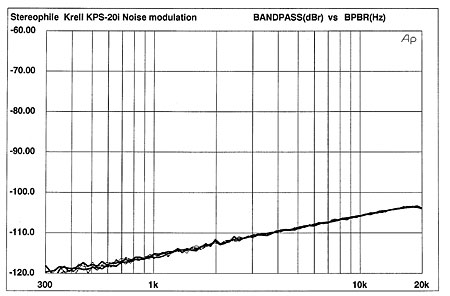
Fig.6 Krell KPS-20i, noise modulation, –60 to –100dBFS (10dB/vertical div.).
Driving the KPS-20i with a full-scale equal mix of 19kHz and 20kHz tones, then performing an FFT on the output, produced the plot of fig.7. The 1kHz difference component (20kHz minus 19kHz) is very low in level, and the other intermodulation products are either nonexistent, or very low in level. Again, this is superb performance.
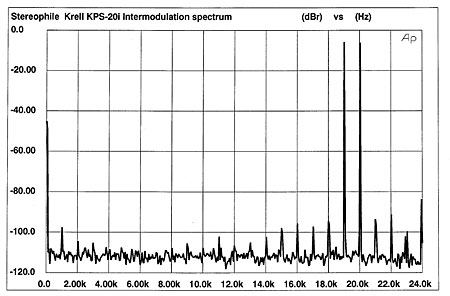
Fig.7 Krell KPS-20i, HF intermodulation spectrum, DC–22kHz, 19+20kHz at 0dBFS (linear frequency scale, 20dB/vertical div.).
Assessing the KPS-20i's word-clock jitter performance was tricky. When the top cover was removed to gain access to the word-clock signals that time the DACs, the KPS-20i wouldn't play the test CD on its integral transport. Consequently, the only way to measure the KPS-20i jitter was when it was driven by an external source (in this case, a Meridian CDR machine). The following measurements therefore reflect the KPS-20i's jitter performance with the jitter-inducing Crystal CS8412 and S/PDIF interface in the signal path. When playing CDs directly on the KPS-20i's transport, the jitter performance is likely to be vastly better.
At any rate, here's what I measured on the 16x-oversampling (705.6kHz) word-clock signal with the Meitner LIM Detector. Fig.8 is the clock-jitter spectrum when the KPS-20i was driven by a 1kHz full-scale sinewave. The jitter spectrum is quite spiky, indicating that the jitter is composed of periodic jitter components rather than the more benign random jitter. The RMS jitter level, measured over a 400Hz–22kHz bandwidth, was 375 picoseconds.
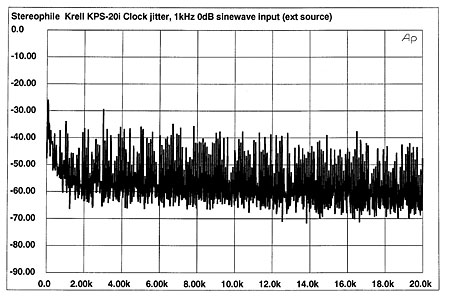
Fig.8 Krell KPS-20i with external data source, word-clock jitter spectrum, DC–20kHz, when processing 1kHz sinewave at 0dBFS (linear frequency scale, 10dB/vertical div., 0dB=1ns).
With an input signal of all zeros, the jitter spectrum was much cleaner (fig.9), and the RMS jitter level decreased dramatically to 90ps. This large difference in jitter performance indicates that the KPS-20i's jitter is dependent on the input signal characteristics—not a good thing.
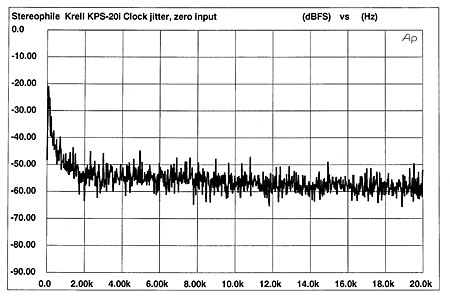
Fig.9 Krell KPS-20i with external data source, word-clock jitter spectrum, DC–20kHz, when processing digital silence (linear frequency scale, 10dB/vertical div., 0dB=1ns).
When driven by a 1kHz, –90dB sinewave, the KPS-20i produced the clock-jitter spectrum of fig.10. The RMS jitter level jumped to 575ps. Note the very high levels of period jitter at the test-signal frequency and its harmonics. The presence of a spike in the spectrum indicates that the clock is being jittered at the spike's frequency. These signal-correlated periodic-jitter components are more sonically detrimental than is random jitter. The S/PDIF or AES/EBU interface inherently creates signal-correlated jitter; the digital processor should attempt to reject this jitter at its input rather than pass it to the word clock, where it degrades the processor's sonic performance.
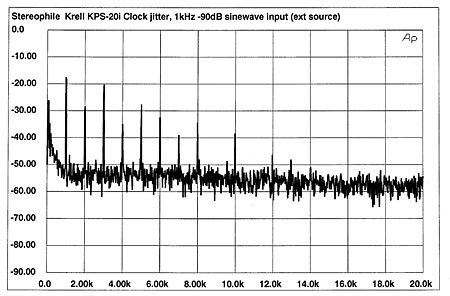
Fig.10 Krell KPS-20i with external data source, word-clock jitter spectrum, DC–20kHz, when processing 1kHz sinewave at –90dBFS (linear frequency scale, 10dB/vertical div., 0dB=1ns).
I must reiterate that this relatively mediocre jitter performance was measured with the KPS-20i driven by an external digital source. When playing discs on the KPS-20i's integral transport, the jitter levels and spectrum will likely be much cleaner. Indeed, I heard a significant difference between the KPS-20i used as a processor and as a CD player. Because most users will use the KPS-20i as a CD player, I wouldn't be concerned about these jitter measurements. This is particularly true in light of the KPS-20i's otherwise superb bench performance.—Robert Harley
- Log in or register to post comments



































